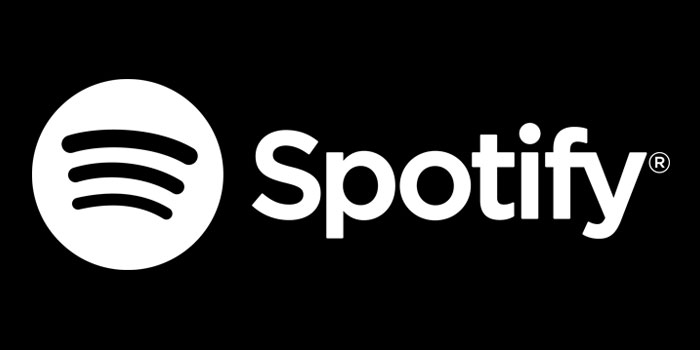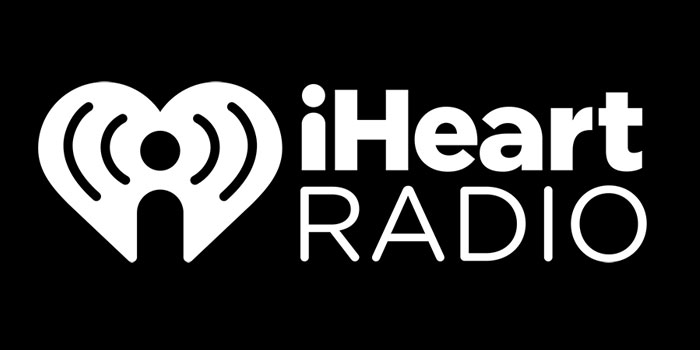Kate Ahl is the owner and founder of Simple Pin Media, a Pinterest management and marketing company. Through their work with over 700 Pinterest accounts, they take a data-driven approach to crafting a Pinterest strategy that aims to help their clients and students find their perfect person on Pinterest. Kate teaches thousands of people about Pinterest marketing through various speaking engagements and her podcast, the Simple Pin Podcast.
Here’s what we covered on the episode:
Kate’s Journey to Pinterest
- I share how Kate and I got connected and how she’s here to talk about how to use Pinterest in your business
- Kate tells us that her degree is in political science and always planned on being a teacher but ended up getting married, moving, and having 3 kids right away, so she was at home with her kids
- In 2009, right before Kate’s son was born, her husband lost his job suddenly, and they were struggling to make ends meet
- During this time, Kate’s friend had just started a frugal coupon deal blog and asked Kate to help with Facebook marketing – Kate loved it, and although she wasn’t making much, it was what she could handle while having little kids at home
- A couple of years later, Kate and her family were still struggling, so her same friend suggested she help with affiliate marketing – Her friend taught her WordPress while Kate self-taught herself code
- In 2013, her friend suggested managing people’s Pinterest accounts because, at that point, Facebook had turned off all business page reach since they had introduced ads
- Bloggers were trying to find a place to get traffic which is when Pinterest popped up on the radar
- Kate shares that she thought managing Pinterest accounts sounded like the worst idea because she was sure that no one would pay her to do that
- For the rest of 2013, Kate learned everything she could about Pinterest, and in 2014, she bought the domain Simple Pin Media and started with a few beta clients
- After 3 months, her clients gave her very positive feedback, so she added a few more clients and then had to decide to make it a legitimate business
- Kate decided to throw herself into it and hired a business coach, now 8 years later, Kate has a team of 35 people, and they work with hundreds of clients
- Pinterest’s intent has always been to put the pinner first, which they still do, but it has changed from chronological to smart feed, which is dictated by your engagement and ads
- How Pinterest is a search and discovery platform that is also merging into a shopping platform
- When people go to Pinterest, they aren’t looking for a specific brand or person; they are looking for something to solve their problem or dream and inspire
- Kate explains that Pinterest users tend to be cold while Instagram users tend to be warm
- Pinterest intends to shorten the time between idea and purchase – Kate says traditionally, it’s about 3 – 6 months
- Kate likes Pinterest because the elements you have on other platforms, like having to write certain things or post at specific times, don’t exist on Pinterest
Simple Pin Media + Where to Start With Pinterest
- In Kate’s business, they primarily serve clients through their done-for-you services because what they’ve found is when it comes to Pinterest, people don’t understand it; people think they can repurpose content in the same way for different platforms
- Some of Kate’s clients feel anxiety around Pinterest because it is pretty picture based, so they give Kate and her team full control
- Kate says that some of their clients still want to control the design of their pins, so they will continue to do that portion of it
- Some middle-ground clients like using Pinterest but would like some guidance – Kate shares that there is a whole education side of the business for those who want to do it themselves
- 8 months into the business, Kate’s daughter was diagnosed with Type 1 diabetes, and she realized she didn’t have anyone who could keep the business going if something happened, so Kate asked a friend if she could teach her
- After Kate hired her friend, she realized she could teach more women who are at home who have little kids to do what she was doing
- The strategic choice Kate made was to hire locals, so they could meet together and have a community
- Kate figured out that she loves teams; she loves empowering women to recognize their gifts and creativity
- The breakdown of leadership and roles within Simple Pin Media and how most of these women have been with Kate for 6 or 7 years
- How Kate aligns Pinterest with Google and YouTube – the first step is to search on Pinterest for what you think people are asking and see if people are even talking about what it is you provide
- By searching your service or product, it helps you see what’s already out there, what people are searching and asking for surrounding your business
- Kate explains that at Simple Pin, they believe pinners go through 3 main stages: inspire, inform and decide
- In the inspire stage on Pinterest, people are just asking questions, the people who click on pin images or videos have decided they want to learn more and are the ones that will potentially go to your website, and when they’re on your website, they’re going to decide to either buy something or join your email list
- For most marketing professionals, Kate says it’s best to get pinners on your email list so so you can warm them up and nurture them
- Once you decide why you’re going to use Pinterest, Kate tells people to commit to it for 6-9 months because Pinterest is a long game
- Start by building your profile, then building your boards, then your pin images
- When it comes to what you are pinning, Kate says content is number one – think about the questions people ask you in your business and build your pins around that
- 2 things you need to knock out of the park whenever it comes to your Pinterest strategy are your keywords and images
- Keywords fuel the algorithm on Pinterest by telling Pinterest where to show your content
- Kate explains that pinners are readers and investigators, which is why it’s important to start by searching what people are asking around your business so you can craft blog posts answering their questions
- Going straight to a sales page never converts, Kate says, because pinners aren’t warmed up to you yet – they’ve tried it on multiple accounts, including their own
- The first place to consider keywords is at the search bar because Pinterest has search prediction – they also have another tool called Trends, where you can look up any keyword and see at what time of year it has the highest volume of searches
- The second place to consider keywords is your image that displays what it is you’re talking about – it needs to have text on it because Pinterest reads the text on images
- Kate loves that Pinterest is not time-based because she could search for something and find a pin someone made 6 months ago
- If you aren’t blogging, Kate says you should send them somewhere that they can join your email list
- Kate explains that the boards you’ve created are where you’re pinning to, and you should think of them as silos, and each board should have its own title
- For example, one board could be titled sales page tactics, and another could be copywriting techniques, so Pinterest will see these silos and know that everything in it is about sales pages and the other one is about copywriting
- Kate shares that if you don’t blog, you can still create 10 different images that all lead to one page where they can learn more or join your email list because Pinterest will see these images as new content
- Why it’s important to have short, poppy copy that catches people’s attention on Pinterest
- You could buy templates for your images if you aren’t a graphic designer or don’t have access to one
B2C Vs. B2B on Pinterest + Top Mistakes
- Kate shares that to sell their services, their strategy is to market the pathway to get people to a discovery call or on their email list to warm them up instead of marketing the actual service
- When using Pinterest for services, Kate says to think about what people are asking or what you’re hearing on discovery calls that you could take and turn into something you can address on Pinterest
- If you have a podcast that you are posting about on Pinterest, and your goal is to get people to sign up for your services, Kate says to put the link to sign up in every post because you want people to take that one action
- Kate shares that the difference between B2B and B2C is the traffic; someone in the food or fashion industry is going to see way more traffic than someone in the marketing space
- One of the biggest mistakes people make is hearing about how someone in B2C is doing and expecting those same results in B2B
- Another mistake Kate shares are that people do not give Pinterest enough time to work; some clients stop working with them after a couple of months because they don’t think it’s working, only to come back 6-9 months later saying they’re getting a bunch of traffic from the things we pinned while working with them
- Kate shares that she has a pin from 2017 that still drives monthly traffic
- Why you can’t take your square image from Instagram and directly repurpose it for Pinterest
- How you need to embrace new features on Pinterest – in 2020, Pinterest introduced idea pins which live forever and are short, storyboard stories like Instagram stories that are about the idea or concept and less about the person
- The 4 formats of pins on Pinterest are standard pins, idea pins, video pins, and pin ads
- People on Pinterest aren’t there to be entertained, which is why your Instagram reel of you dancing won’t perform well on Pinterest – they are there to be delighted and surprised by your ideas
- Kate says you can repurpose your TikTok content on Pinterest as long as you remove the watermark
- Pinterest wants to help physical and digital products, which is unique compared to Facebook or Instagram, where you can’t have a shop for digital products
- In Kate’s business, they created a new package and way they serve done-for-you clients because they want to take all clients through their accelerator, which goes through 6 key elements for Pinterest marketing success
- After clients go through the accelerator, they can decide if they want to go into monthly management or if they want to pass it off to a team member, which is easy to do because they are fully equipped with the strategy to do that
- Pinterest ads have been clunky in the past, but Kate assures us they are getting better and what should excite people about them is that you don’t need to have a long runway with your organic strategy – you can set up your profile and dive right into ads
- Simple Pin Ad Society, which is Kate’s low-cost membership that teaches people and helps troubleshoot
- Give yourself enough time to learn Pinterest ads; Kate says about 6-8 weeks to learn and then 4-6 weeks for your Pinterest ads to optimize
- If Kate could go back and tell herself one thing, it would be to not worry about getting it right because everyone is trying to figure it out, the online space shifts and changes so much, and not everyone’s method is the same
- Connect with Kate on Simple pin media.com or find them at Simple Pin Media on all channels
- Kate suggests going to their Pinterest profile to see what they are doing and how they are positioning their B2B content or what they’re doing with idea pins
Links mentioned:
Like what you heard?
Click here to subscribe + leave a review on iTunes.






